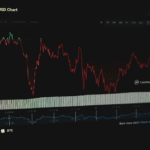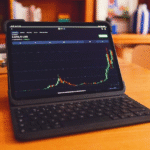
The world of cryptocurrency trading is fast-paced and dynamic, and with the rise of algorithmic trading bots, high-frequency trading (HFT) in crypto markets has become increasingly popular. These bots execute trades in milliseconds, capitalizing on the market’s rapid fluctuations. In this blog, we’ll explore how algorithmic trading bots function in high-frequency crypto trading, their advantages, the types of algorithms commonly used, and how to optimize their performance for efficient trading.
Advantages of Using Algorithmic Trading Bots
Algorithmic trading bots bring several advantages to the world of high-frequency crypto trading. One of the key benefits is speed. Bots can execute trades much faster than a human could ever achieve, reacting to price changes and market trends in real time. This speed allows traders to capitalize on fleeting opportunities and market inefficiencies, especially in highly volatile markets like cryptocurrencies.
Another advantage is the automation of trading strategies. Bots eliminate the need for manual intervention, enabling round-the-clock trading without breaks. Traders can set predefined rules for buying and selling, reducing the emotional biases that often lead to poor decision-making. Furthermore, these bots provide consistent execution, meaning they can follow a strategy with precision over extended periods, maintaining the discipline that humans might lack during market swings.
Finally, algorithmic trading bots offer enhanced market liquidity by participating in high-frequency trades. As they execute numerous small transactions quickly, they contribute to a more fluid market, potentially reducing spreads and slippage for all participants.
Types of Algorithms Commonly Employed
Several types of algorithms are used in high-frequency trading, each tailored to specific strategies:
Market Making Bots
These bots place buy and sell orders simultaneously at different price points, profiting from the spread between them. Market-making bots are vital for liquidity and are widely used by exchanges and traders to capitalize on small price movements.
Arbitrage Bots
These bots exploit price discrepancies between different exchanges. For example, if Bitcoin is priced lower on one exchange than another, arbitrage bots will buy low and sell high, capitalizing on the difference before the market corrects itself.
Trend-Following Bots
These bots analyze the market’s direction and make trades based on established trends. They use technical indicators like moving averages, Relative Strength Index (RSI), and volume to identify trends and execute trades in the same direction.
Mean Reversion Bots
These bots operate on the belief that asset prices will return to their average over time. They make trades when an asset deviates from its historical mean, profiting when the price eventually reverts.
Momentum Bots
These bots trade on the strength of a price movement, aiming to profit from the continuation of a trend. They enter a position when the price shows significant momentum and exit as soon as signs of a reversal appear.
Optimizing Bot Performance for Maximum Efficiency
To maximize the efficiency of algorithmic trading bots in high-frequency crypto trading, several factors must be considered:
Latency Reduction
Since high-frequency trading relies on millisecond timing, minimizing latency is crucial. This can be achieved by hosting the trading bot on servers close to the exchange’s data centers, ensuring the fastest possible communication with the market.
Algorithmic Fine-Tuning
Traders should continuously monitor and adjust the algorithms based on market conditions. Strategies that perform well in one environment might falter when market volatility increases or decreases. Regular updates and testing help keep the bot in sync with evolving market trends.
Risk Management
High-frequency trading is not without risk, especially in a volatile market like crypto. Setting risk management parameters such as stop-losses and position limits is critical to avoid significant losses during sharp market fluctuations.
Backtesting
Before deploying a bot in live markets, traders should backtest it using historical data. This allows them to assess the bot’s performance under various market conditions and refine its strategies to maximize profit while minimizing risk.
Security
Finally, security should never be overlooked. Since trading bots have access to exchange accounts, ensuring robust security measures like two-factor authentication (2FA) and API key restrictions is essential to prevent hacking or unauthorized access.
Embrace the New Era of Digital Asset Management
Join Kenson Investments and explore innovations in the blockchain and digital assets sector. Our digital asset specialists are here to help you navigate the complexities of digital asset portfolios and defi services.
Call now to discover how we’re moving the industry forward!
Disclaimer: The information provided on this page is for educational and informational purposes only and should not be construed as financial advice. Crypto currency assets involve inherent risks, and past performance is not indicative of future results. Always conduct thorough research and consult with a qualified financial advisor before making investment decisions.
“The crypto currency and digital asset space is an emerging asset class that has not yet been regulated by the SEC and US Federal Government. None of the information provided by Kenson LLC should be considered financial investment advice. Please consult your Registered Financial Advisor for guidance. Kenson LLC does not offer any products regulated by the SEC, including equities, registered securities, ETFs, stocks, bonds, or equivalents.”














